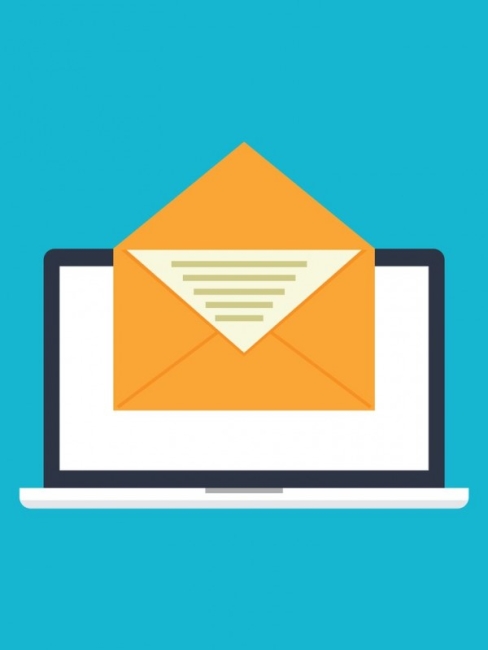You have /5 articles left.
Sign up for a free account or log in.

Istockphoto.com/Bhavesh1988
Congratulations, you just made it through a tough interview. Now all you have to do is wait for the potential employer to call with an offer, right?
Not quite. The trend toward automated job search processes leads seekers today to assume that thank-you notes are optional or ineffective. On the contrary, a well-thought-out follow-up message puts the finishing touches on a great interview or helps save you after a not-so-great one. The notion that such outreach is ineffective stems from the fact that most people do not put much thought into their follow-up. They write generic, one- to two-sentence thank-you notes, which naturally do little to advance their candidacy.
Reaching out to an employer after an interview shows you care about the position and the organization. Further, while your day included only one interview, theirs probably consisted of many interviews with several candidates. Your message afterward serves to remind them of who you are, your brand and what you bring to the position. Ultimately, your postinterview message is one last opportunity to stand out from the crowd.
One of the biggest mistakes candidates make is sending something generic, such as: “Thank you for taking the time to interview me for the position of X yesterday. It was wonderful to learn more about the exciting advances X Co. is making, and I’d welcome being a part of your team.” This takes candidates no time to write, is likely cut and pasted to every interviewer, and is sent to any organization, as long as key salutations and details are changed. Luckily for you, most candidates do just that.
Strategic follow-up includes: individualized messages to the most significant interviewers, a brief summary of what you appreciate about them, what specifically inspires you about them and how you see a fit with your interests, skills and values. Before writing your follow-up message, take the time to reflect on the general themes of the interview. What new information did you glean? Were there any distinctive ideas you shared with them that you hope to reiterate? Did you forget to share something important? What really inspired you in that interview? Reflect these themes and concepts in your message.
Following strong interviews, keep your tone positive, focusing on highlights of the day and conveying energy about fit. For example: “It was a pleasure to learn of your mission to provide educational access to everyone, which aligns with my own inclusive classroom practice.” If you discussed a particular article or resource, including it in the message as an “FYI” allows the conversation to continue beyond the interview and shows your reliability.
Messages after weaker interviews provide opportunities to share information you left out or to clear up misconceptions. I once met with a student who wanted to switch fields from business to fashion. While interviewing at a boutique, however, she spent more time talking about ways to make up for her inexperience instead of focusing on the ways in which her economics degree and creativity qualified her for the position. After multiple drafts, she crafted an email briefly explaining the story of her interest and qualifications for the job and why this boutique provided the ideal setting for achieving her goal of becoming a fashion designer. The boutique owner contacted her right away and stated that the email solidified the decision to hire her. That job helped her gain entrance into a top design school.
Tailoring messages does take time but not as much as you think, and taking that time makes a difference. In general, follow-up emails should be no more than three brief paragraphs. It helps to write these out first instead of in the card or email; it ensures fewer mistakes, as well. While I appreciate the personal nature of a handwritten note, email remains the standard, as your messages can be sent and received much quicker. The ideal response time is within 24 hours of the interview -- and no later than 48 hours.
Asking yourself the reflection questions I mentioned earlier in this article will save you time in writing correspondence. It also helps if you go into the interview already understanding your fit with the position to begin with. If your messaging is clear to you, it is much easier to write. So spend most of your time in the reflection stage first -- perhaps while you are driving or flying back from the interview.
With multiple interviewers, write about one particular moment shared, an idea discussed with just them, or a concept highlighted in their segment of the interview process. For example, if you met with multiple faculty members from a department, follow up on a question that a particular person asked or comment on the culture of the department you soon hope to join. Your brand remains the same throughout each correspondence, so general themes remain consistent in all of your messages, also saving time.
Be sure to keep track of interviewer names throughout the day, or ask your primary host for a list of names and emails afterward. Ideally, you will write to each interviewer separately. (In cases of group interviews, however, group messages work.) Likewise, send correspondence to those with whom you spent meaningful time. While ideal, interviewers do not expect you to email everyone with whom you speak throughout an all-day interview.
Interviewing causes stress for interviewers as much as it does you, so they do appreciate follow-up afterward. Taking the time to say thank you shows your gratitude for their time and the job opportunity. If done strategically, however, it also confirms their interest in your candidacy and starts you off on the right foot with your new employer.




